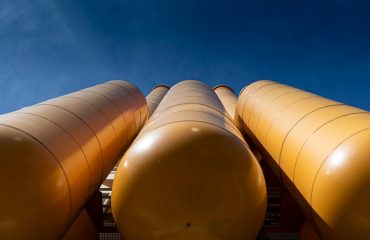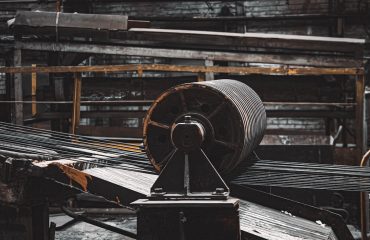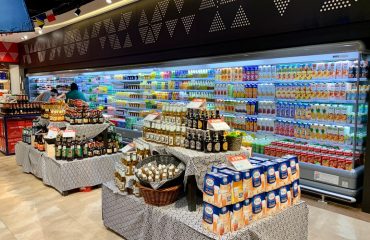Steel, a ubiquitous material, continues to be a cornerstone of modern construction and engineering. Its strength, versatility, and cost-effectiveness make it the material of choice for a vast array of applications. This blog post explores several compelling case studies demonstrating the remarkable capabilities of steel solutions in diverse contexts.
1. Skyscraper Construction: Reaching New Heights with Steel
The construction of skyscrapers relies heavily on steel’s high strength-to-weight ratio. Consider the Burj Khalifa, the world’s tallest building. Its intricate steel framework, meticulously designed and engineered, supports the immense weight of the structure while providing stability against extreme weather conditions. The use of high-strength steel allowed for the creation of a slender, elegant design that wouldn’t be possible with other materials. The case study of the Burj Khalifa showcases not just the strength of steel but also the advanced engineering techniques employed to optimize its use in such a demanding project. Detailed finite element analysis and sophisticated welding techniques were crucial in ensuring the structural integrity of the building. Furthermore, the rapid construction time achieved through prefabricated steel components highlights the efficiency advantages of steel in large-scale projects. The modular nature of steel construction also facilitated easier management of the complex logistics involved in building a structure of this magnitude.
2. Bridge Engineering: Spanning Gaps with Steel’s Resilience
Bridges, whether spanning vast rivers or connecting urban areas, often rely on steel’s tensile strength and durability. The Akashi Kaikyō Bridge in Japan, one of the longest suspension bridges globally, serves as a prime example. Its massive steel cables and supporting structures withstand immense stresses from wind, traffic, and seismic activity. The selection of high-performance steel alloys, designed to resist corrosion and fatigue, was crucial to the bridge’s longevity. This case study illustrates how steel’s inherent properties, combined with advanced engineering designs, can overcome significant geographical challenges. The detailed analysis of stress distribution and load-bearing capacity, essential for bridge design, highlighted the importance of precision engineering and material selection in ensuring the structural integrity and safety of such critical infrastructure. The use of advanced corrosion protection techniques, such as galvanization and specialized coatings, further extends the lifespan of these steel structures.
3. Infrastructure Projects: Steel’s Role in Sustainable Development
Steel plays a vital role in building resilient infrastructure, contributing to sustainable development goals. Consider large-scale projects like railway lines and pipelines. Steel’s ability to withstand extreme temperatures, pressures, and vibrations makes it ideal for these applications. The construction of high-speed rail networks, for example, often employs steel for tracks, bridges, and supporting structures, ensuring reliable and efficient transportation. Similarly, pipelines transporting oil and gas rely on steel’s durability and resistance to corrosion to guarantee safe and uninterrupted operations. The case study of the Trans-Alaskan Pipeline System, which traverses challenging terrain, demonstrates the effectiveness of steel in handling harsh environmental conditions. The use of specialized steel alloys, designed to withstand extreme cold and prevent corrosion, ensures the pipeline’s operational efficiency and longevity. This highlights the importance of material selection in infrastructure projects focused on sustainability and long-term performance.
4. Automotive Industry: Steel’s Contribution to Safety and Efficiency
The automotive industry relies heavily on steel’s formability and strength in creating vehicle bodies. Advanced high-strength steel (AHSS) alloys are increasingly used to enhance vehicle safety and fuel efficiency. The development of lighter, yet stronger, steel components reduces vehicle weight, thereby improving fuel economy and reducing emissions. Case studies analyzing crash test results demonstrate the superior performance of vehicles incorporating AHSS compared to those using traditional steel grades. The ability to tailor the mechanical properties of steel through alloying and heat treatment allows for the creation of components optimized for specific needs, such as enhanced impact resistance in crash zones and improved stiffness in other areas. This highlights the continuous evolution of steel technologies and their adaptation to the demanding requirements of the automotive industry.
5. Offshore Wind Energy: Steel’s Role in Renewable Energy Generation
The growth of offshore wind energy relies heavily on steel’s strength and corrosion resistance. The construction of massive offshore wind turbine foundations requires robust steel structures capable of withstanding the harsh marine environment. These foundations, often fabricated from large steel sections, must withstand the immense forces of waves, wind, and currents. Case studies examining the performance of offshore wind farms demonstrate the crucial role of steel in ensuring the stability and longevity of these renewable energy projects. The use of specialized coatings and corrosion protection techniques is critical in extending the lifespan of these structures and minimizing maintenance requirements. The continuous development of new steel alloys tailored for offshore applications ensures the cost-effectiveness and reliability of renewable energy infrastructure. This demonstrates the adaptability of steel solutions in supporting environmentally friendly initiatives.
In conclusion, these case studies showcase the unparalleled versatility and performance of steel in addressing diverse engineering challenges. From towering skyscrapers to offshore wind farms, steel continues to be a critical material driving innovation and progress across various sectors.
SEO Tags:
Steel solutions, case studies steel, engineering applications steel, steel construction, structural steel




